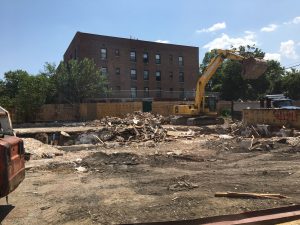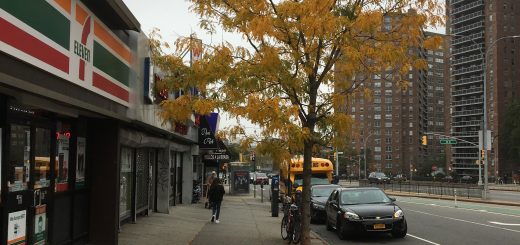Shalimar demolished but not all hope lost
Views: 465
Rego Park residents awoke one morning to see scraps of steel, wood, and bricks at 63-68 Austin Street, the spot where the classic Shalimar Diner once stood. Demolition began without notice two weeks ago.
“I walked by and I had such a sad feeling to see the space empty,” said Michelle Krentz. “I have so many memories. I would love to see it rebuilt, but not too far away since I want to be able to enjoy it regularly once again.”
The Shalimar Diner closed in November of 2018 after 45 years in business when the property was sold to a developer.
When demolition plans were announced last spring, this columnist, nicknamed “Diner Man” after saving other diners like the Moondance and Cheyenne, launched a movement to save the Shalimar Diner. 
The asking price for the classic diner was $0, as long as an interested party would finance the cost to move it.
The “Save The Shalimar Diner” group included attorney Ronald Hariri and Lenny Dykstra, former 1986 World Series champion with the New York Mets.
The goal was to move the diner to Riverhead on Long Island, where it would reopen as a brew pub. However, local zoning regulations prohibited a large diner on a commercial property owned by Hariri, and obtaining a variance would have been too long of a process
“I was both shocked and disappointed,” said Ron Caveglia. “I am unclear as to why this architectural gem was torn down in such haste, especially while parties have been diligently searching for its relocation without incurring expense to the developer.
“It is even more difficult to accept, since the Shalimar was the only local original freestanding diner,” he added. “Since there is such extensive overdevelopment in Queens, any original sites of sentimental and business value should be given high priority for preservation efforts.”
 However, the Shalimar Diner may be rebuilt if a suitable property can still be found.
However, the Shalimar Diner may be rebuilt if a suitable property can still be found.
“Diners are an iconic part of New York and have created a feeling of community for generations in our city, which we miss out on with cookie-cutter $10 coffee houses,” said Hariri. “Although we were not able to overcome zoning restrictions on the North Fork to save the Shalimar, we remain hopeful to find the right fit to create our own version of the Shalimar in the near future.”
The Kullman Dining Car Company’s Mediterranean-style façade was distinguished by its stonework, symbolic of Greek-American diner owners, as well a touch of Art Deco with a stainless steel-and-teal band and arched steel windows.
The Shalimar was one of the first places Joe Vega ate with his wife after moving to the area.
“This was a classic diner and should definitely be rebuilt,” he said.” After a little research, I learned that the stone facade was original, and its unusual design became its most attractive and immensely interesting component.”
For Bonnie Sholl, the Shalimar Diner was central to many of her lifelong memories.
“Certain establishments represent more than their intended use, and the Shalimar was one of them,” she said. “In 1987, a week after my son Maximillian was born, he learned the art of eating out, but his howl to move on was stronger than the delicious breakfast looking at me, and I remember the waitress Dottie helping us exit successfully.”
Pam Ifshin Friedlander said the Shalimar Diner was more than just a place to eat. 
“Losing a cultural cornerstone in New York City history is a loss for everyone,” she said. “The land was just too valuable, but what’s truly valuable is preserving places that have an importance in our lives. The memories will always be there for everyone who had great times with great friends.”
Ronnie Goldberg-Brodie taught at nearby PS 139 from 1980 to 2004, and her grandchildren attended Preschool of America on Saunders Street.
“The Shalimar was our go-to place for lunch for 25 years,” she said. “I watched my neighborhood undergo many changes since 1963. Some good, but some not so good.”




Therse arre actually great ideas in regarding blogging. Yoou
hage touched some fastidious factors here. Anny waay keep uup wrinting.
I really like whatt you guyss aree up too. Thiis kind oof clever work aand reporting!
Keeep up tthe wonderfujl woorks gys I’ve yyou gus to our blogroll.
I am truly pleased to glance at this blog posts which contains tons of useful facts, thanks for providing such data.